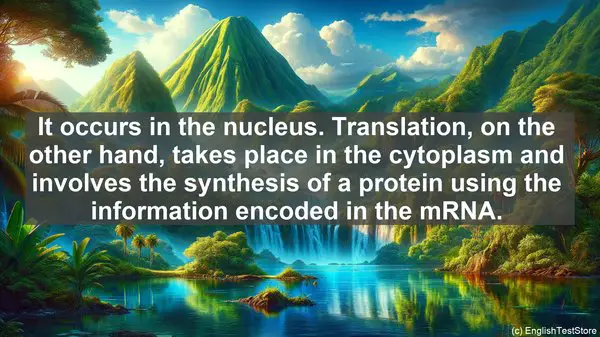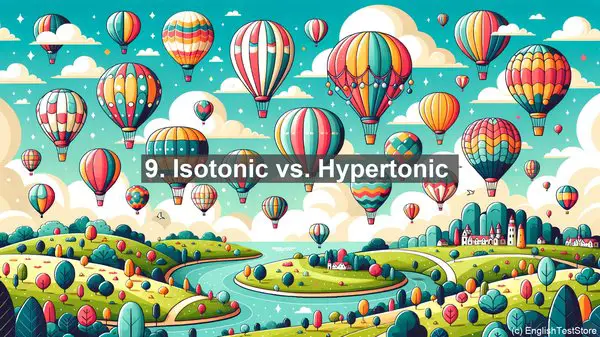Introduction to Biophysics
Welcome to our biophysics series. Today, we’re diving into the world of commonly confused words. Biophysics, as you know, is the interdisciplinary field that combines biology and physics. It’s a fascinating subject, but it can also be challenging due to the technical terminology. So, let’s get started!
1. Diffusion vs. Osmosis
Diffusion and osmosis are both processes by which molecules move from an area of high concentration to low concentration. The key difference lies in the type of molecules involved. Diffusion refers to the movement of any molecule, while osmosis specifically deals with the movement of water molecules across a semi-permeable membrane. Remember, diffusion is like a free-for-all, while osmosis is all about water!
2. Genotype vs. Phenotype
When studying genetics, it’s essential to understand the difference between genotype and phenotype. Genotype refers to the genetic makeup of an organism, the specific combination of genes it carries. On the other hand, phenotype is the observable characteristic or trait. While genotype sets the stage, it’s the phenotype that we can see and study.
3. Endothermic vs. Exothermic
In the realm of thermodynamics, endothermic and exothermic reactions play a crucial role. Endothermic reactions absorb heat from their surroundings, resulting in a decrease in temperature. Exothermic reactions, on the other hand, release heat, leading to a temperature increase. Remember, endo means ‘inside,’ so it’s like the reaction is taking heat in, while exo means ‘outside,’ indicating heat is being released.
4. Prokaryotic vs. Eukaryotic
When studying cells, we often come across these two terms. Prokaryotic cells are simpler, lacking a nucleus and other membrane-bound organelles. Bacteria are examples of prokaryotic cells. On the other hand, eukaryotic cells are more complex, with a nucleus and various organelles. Plants, animals, and fungi are all composed of eukaryotic cells.

5. Transcription vs. Translation
These terms are frequently used when discussing the central dogma of molecular biology. Transcription is the process of creating an RNA copy from a DNA template. It occurs in the nucleus. Translation, on the other hand, takes place in the cytoplasm and involves the synthesis of a protein using the information encoded in the mRNA. Think of transcription as ‘writing’ and translation as ‘reading’ the genetic code.

6. Accuracy vs. Precision
In experimental sciences, accuracy and precision are vital. Accuracy refers to how close a measurement is to the true or accepted value. Precision, on the other hand, relates to the consistency or reproducibility of a measurement. You can be precise without being accurate, but to obtain reliable results, you need both accuracy and precision.
7. Hypothesis vs. Theory
In scientific research, these terms have specific meanings. A hypothesis is a proposed explanation for a phenomenon. It’s like an educated guess that can be tested. A theory, on the other hand, is a well-substantiated explanation based on a large body of evidence. Theories are supported by multiple experiments and observations. They are the foundation of scientific knowledge.
8. Ionization vs. Dissociation
When a compound breaks apart into ions, we use the terms ionization and dissociation. Ionization typically occurs when a neutral atom gains or loses an electron, resulting in a charged particle. Dissociation, on the other hand, refers to the separation of ions that are already present in a compound. Both processes are essential in understanding the behavior of electrolytes.
9. Isotonic vs. Hypertonic
When comparing solutions, isotonic and hypertonic are terms you’ll often encounter. An isotonic solution has the same concentration of solutes as the reference solution. In contrast, a hypertonic solution has a higher concentration of solutes. Remember, ‘hyper’ means ‘more,’ so a hypertonic solution has more solutes and less water compared to the reference solution.
10. Kinetic Energy vs. Potential Energy
Energy is a fundamental concept in physics. Kinetic energy is the energy of motion. The faster an object moves, the more kinetic energy it possesses. Potential energy, on the other hand, is stored energy. It can be gravitational, elastic, or chemical, among others. Think of a ball at the top of a hill. It has potential energy, but once it starts rolling, that potential energy is converted into kinetic energy.
